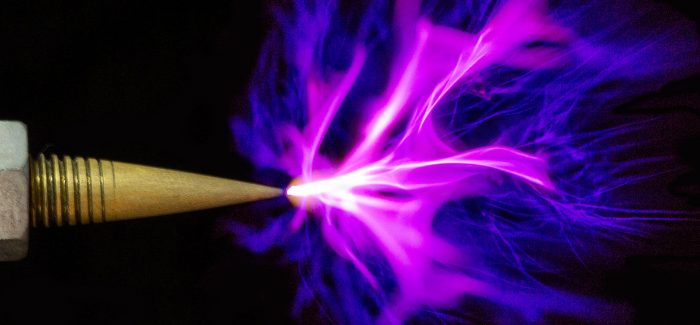Patent of the Month – Atmospheric-Pressure Plasma
Kobus Cilliers | On 28, Apr 2019
Darrell Mann
Our Patent of the Month this month takes us to Taiwan, and a quartet of inventors at the National Chiao Tung University. US 10,121,638 was granted on November 6. In a wonderfully succinct write-up (5 pages of narrative), here’s what the team has to say about the problem addressed by the invention:
 In general, plasma is generated via applying an electromagnetic field to neutral gases. The gas temperature and electron density of plasma ranges widely. Therefore, plasma has numerous applications such as plasma spray coating, semiconductor etching, metal cutting, metal welding, vehicle exhaust purification, and fluorescent lamps.
In general, plasma is generated via applying an electromagnetic field to neutral gases. The gas temperature and electron density of plasma ranges widely. Therefore, plasma has numerous applications such as plasma spray coating, semiconductor etching, metal cutting, metal welding, vehicle exhaust purification, and fluorescent lamps.
At present, non-thermal (near the room temperature) atmospheric-pressure plasma is normally generated using inert gases. In fewer studies, a higher breakdown voltage is applied to ionize nitrogen, air, or even oxygen. However, the electron affinity of oxygen at atmospheric pressure is so strong that oxygen is easy to capture the electrons from plasma. Thus, it is very difficult to maintain the plasma in a steady state. Besides, under such operating condition, excessive voltage may result in high temperature or generating an unintended high concentration of ozone. Therefore, this kind of plasma thereby is unsuitable to be used in biomedical therapies and temperature-sensitive materials.
Nowadays, there are few researches generating plasma activated water in high volume at atmospheric pressure. Using air as the working gas to generate plasma activated water for water purification, some poisonous substance such as nitrite ions are generated in the meantime, causing the death of aquatic animals, furthermore causing the damage to ecology.
Owing to the above mentioned problems, the present invention proposes an atmospheric-pressure plasma jet generating device to provide non-thermal atmospheric-pressure plasma, which may be applied to temperature-sensitive materials or generate plasma activated water…
…The primary objective of the present invention is to provide an atmospheric-pressure plasma jet generating device, which can generate a non-thermal (near the room temperature) plasma jet under atmospheric pressure with low energy consumption.
From a contradiction perspective, the basic fight described here is between the desire to achieve a stable plasma, and to not to have to use high temperature or inert gases to achieve it. Mapped on to the Contradiction Matrix, the problem thus looks like this:
And here’s how the inventors achieved their solution:
In order to achieve the above mentioned objectives, the present invention proposes an atmospheric-pressure plasma jet generating device, which comprises a hollow housing [Principle 31, Holes] , a discharge tube arranged inside the housing, an air inlet, and an outlet disposed in the bottom of the housing. The air inlet interconnects with the outlet and the discharge tube. The discharge tube includes an internal electrode, a first dielectric material, and an external electrode. The first dielectric material is placed between the external electrode and the internal electrode and surrounds the internal electrode. The internal electrode provides channels inside the discharge tube (…’has a cross section with a shape multiple V notches, or multiple grooves) [Principle 3, Local Quality] . An external power source is electrically connected to the internal electrode and the external electrode through cables to generate a high electric field within the discharge tube. When an external gas flows into the discharge tube via the air inlet, the external gas is dissociated[Principle 1, Segmentation] by the high electric field to generate plasma. Then, the plasma flows out of the discharge through the outlet.
…as with many things in (mechanical design) life, it’s all about holes and grooves and doing more with less.


